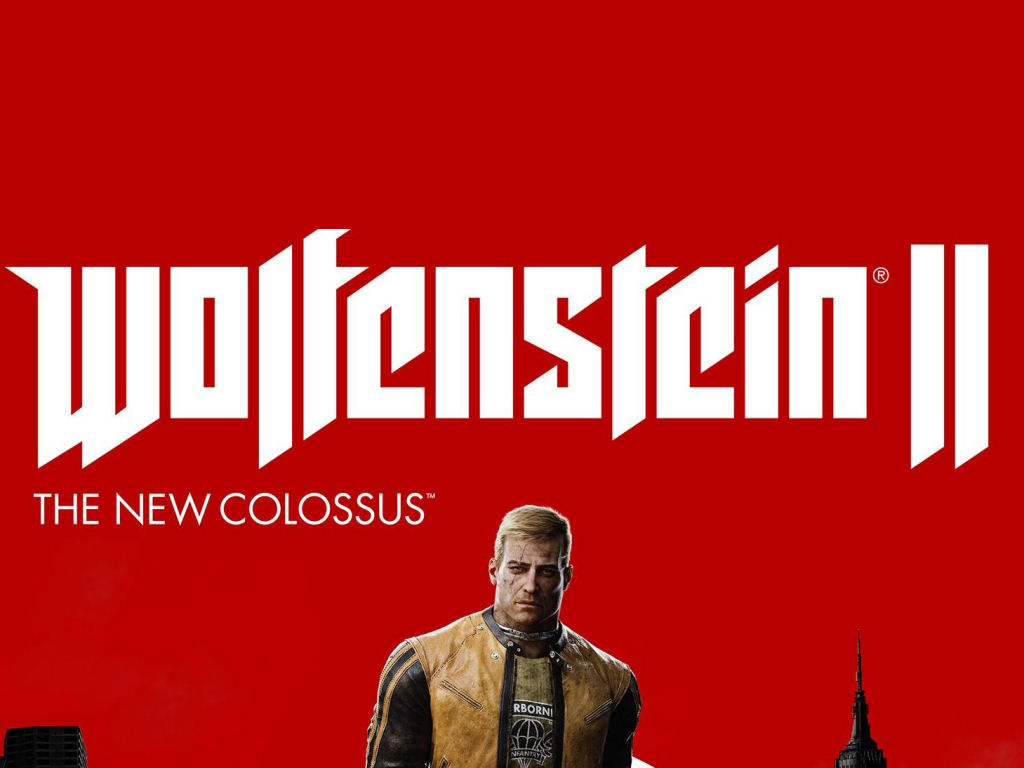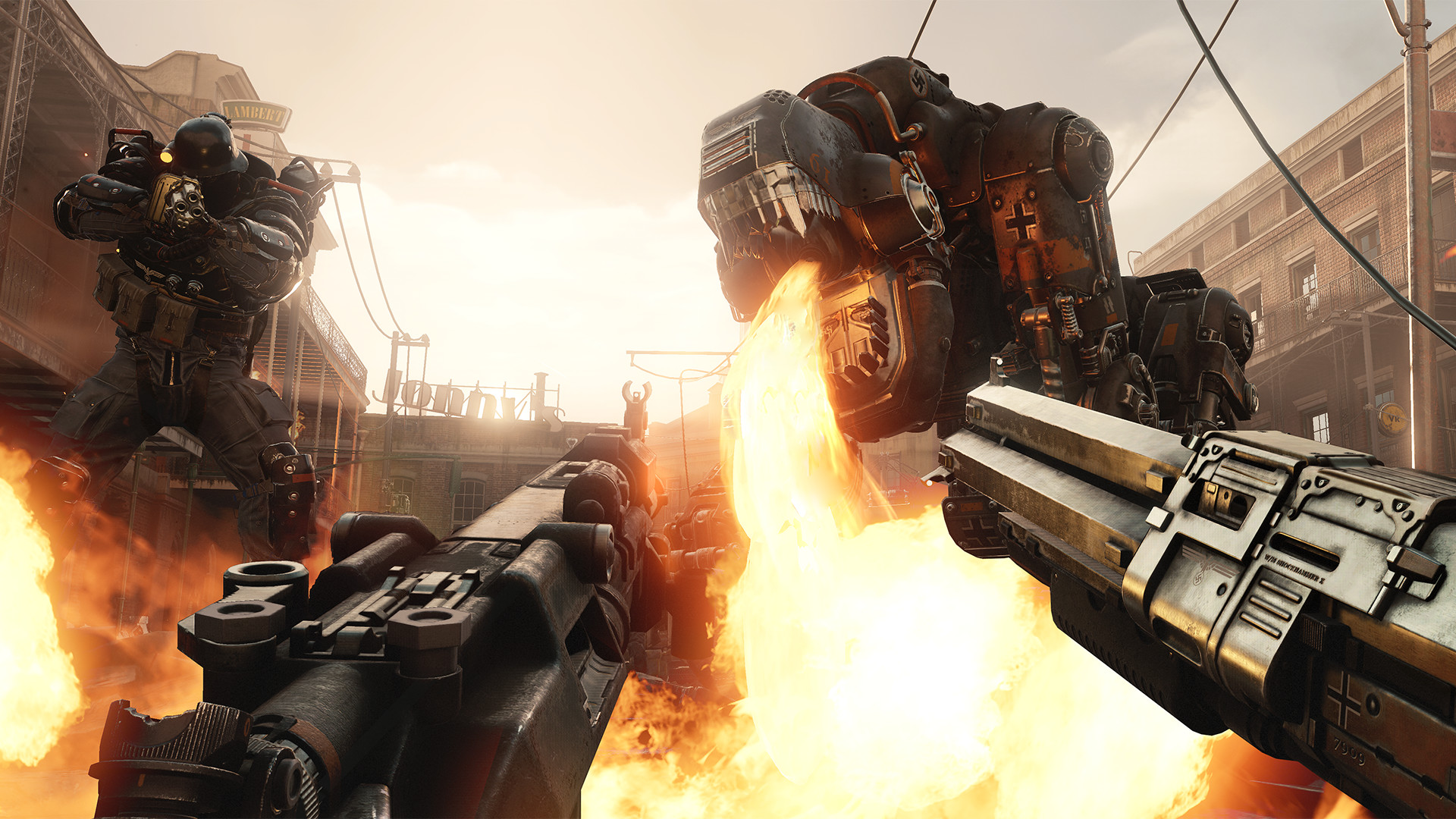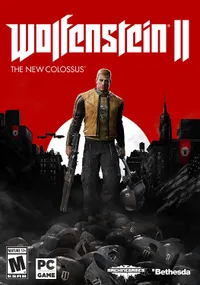Wolfenstein II: The New Colossus Performance Review
The Game, Graphics Engine & Settings
Who hasn’t heard of Wolfenstein? The series is both legendary and extensive. It spans more than 35 years of history. So rather than have us rattle off the highlights, check out Wolfenstein's Wikipedia page if you're curious.
Wolfenstein II: The New Colossus marks the franchise's return, this time with MachineGames and the id Tech 6 game engine, first used in 2016's Doom. The engine is packed with all kinds of technology, it utilizes the Vulkan API, and it promises a lot in terms of optimization and rendering quality.
Naturally, we had to test the game using our revamped mid-range platform, based on AMD's Ryzen 5 1600X, with 10 GPUs ranging from entry-level to mainstream and two higher-end graphics cards.
Magnificent, But Little Openness
Creating a game worthy of bearing the Wolfenstein name involves risks. It needs to live up to the series' fantastical twists and turns. And having played through the whole thing already, we can say The New Colossus achieves this benchmark with moments we simply didn't see coming.
But how does it look? In terms of visuals, the game is set up for success thanks to the id Tech 6 engine's capabilities, even if most of the action is limited to indoor environments. During the few scenes that take place outdoors, you're mostly fighting down narrow streets, dodging wrecked cars, or hiding in the rubble of bombed-out buildings. Nevertheless, we're impressed by the game's responsiveness and fluidity, which reminds us of certain titles built using the Unreal Engine.
To be sure, Wolfenstein II is a home-run both technically and visually!
Latest Decisive Patch
Testing performance the day a game is released isn't always representative, we've noticed. It seems like even highly-anticipated AAA titles receive critical patches in the weeks after launch. And that's not to mention the major driver updates from AMD and Nvidia.
Get Tom's Hardware's best news and in-depth reviews, straight to your inbox.
For Wolfenstein II, we made the decision to wait a bit, which ended up being smart because the game's developers decided to temporarily disable async compute on Nvidia GPUs due to visual bugs. The frame rates are now nothing like they were, and it's possible that AMD benefits as a result.
Grueling Benchmark Sequence
Wolfenstein II does not come with an integrated benchmark, so we chose a benchmark sequence that places heavy demands on the graphics card and/or CPU. It would be useless to test this game in too closed-in of an environment, since that wouldn't push our GPUs as hard. Instead, we went with a more demanding metric to ensure performance would generally be better everywhere else.
Minimum & Recommended System Requirements
The game's Steam page gives us an idea of the minimum and recommended configurations for a good gaming experience in Wolfenstein II. While the baseline is relatively reasonable, you'll need to beef your specs up to satisfy the publisher's recommendations. Clearly, entry-level graphics cards and processors are out of the question.
| Configuration | Minimum | Recommended |
|---|---|---|
| Processor | Intel Core i5-3570or Core i7-3770or AMD FX-8350or Ryzen 5 1400 | Intel Core i7-4770or AMD FX-9370or Ryzen 5 1600X |
| Memory | 8GB | 16GB |
| Graphics Card | GeForce GTX 770 4GBor Radeon R9 290 4GB | GeForce GTX 1060 6GBor Radeon RX 470 4GB |
| Operating System | Windows 7, 8.1, 10 (64-bit only) | Windows 7, 8.1, 10 (64-bit only) |
| Disk Space | 55GB | 55GB |
MORE: Destiny 2 Performance Review
MORE: DiRT 4 Performance Review
MORE: Prey Performance Review
Current page: The Game, Graphics Engine & Settings
Next Page How We Tested Wolfenstein II-
HEXiT something i noticed about this game. i have an ancient 920@3.5 and a gtx 970Reply
i can run the game at near max settings (just turn the textures down from ultra) and when vsync is on it shows a solid 60fps... i turn vsync off and get between 40 and 55 fps. so im guessing the fps counter isnt that accurate in game. -
toddybody Not sure why the RX 64 and GTX 1080 Benchmarks are separate as a "bonus"...and why other top tier (i.e. 1070, 1080ti) cards arent included.Reply
Don't have one myself, but 4K/2160p benchmarks would be nice too. Kinda underwhelmed, considering how long the title has been out. -
Sakkura Would have liked to see a 4GB card in the mix, and ideally even the 1060 3GB. So we could see how much VRAM is actually needed for solid performance. VRAM utilization is imprecise because games can allocate a lot more VRAM than they really need.Reply
I would also like to have seen other CPUs tested. It's great that the game uses 6 cores and 12 threads, but will it still run well on 4c/4t? Lots of people are still on processors like that. -
spdragoo Would have also been nice to see some actual CPU benchmarking, especially since the spread of minimum/recommended CPUs represents a very wide range (i.e. Ivy Bridge Core i5/i7 CPUs & 4C/8T FX CPUs all the way up to current Ryzen CPUs), as well as some idea as to whether newer Intel CPUs have much of a boost over the 3rd/4th-gen versions.Reply
Something strange as well: the minimum/recommended Intel CPUs were 4C/4T or 4C/8T CPUs, implying that you need at least 4 physical cores to run this (i.e. just having 4 threads won't work, so no 2C/4T Core i3/Pentium CPUs). And that's kind of supported by the listed FX CPUs. But why would Machine Games say that you can't use a Ryzen 3 (4C/4T) CPU to run this game? The R3 1200 is almost identical to the minimum R5 1400 listed (same Boost/XFR speeds, only 100MHz slower on base, & is a 4C/4T CPU vs. the 4C/8T 1400), & the R3 1300X runs almost as fast as the 6C/12T R5 1600X. Also, would this perhaps be a game that a Coffee Lake Core i3 (4C/8T) could handle, or would you still need to use a Core i5 or i7? -
spdragoo Reply20435970 said:Would have liked to see a 4GB card in the mix, and ideally even the 1060 3GB. So we could see how much VRAM is actually needed for solid performance. VRAM utilization is imprecise because games can allocate a lot more VRAM than they really need.
I would also like to have seen other CPUs tested. It's great that the game uses 6 cores and 12 threads, but will it still run well on 4c/4t? Lots of people are still on processors like that.
Just what I was wondering, especially since they listed Ivy Bridge/Haswell Core i5 (4C/4T) CPUs in the minimum/recommended CPU sections. -
Kahless01 did you read different articles than i did? there is a damn 1060 3g and several 4gb cards included in the test. the 3g 1060 takes a huge hit compared to the 6g.Reply -
quilciri Looks like the game requires a large amount of GPU memory, and doesn't necessarily need the highest end GPU. I don't know how they came to that conclusion that they did when the 8GB 390 did so well in the test.Reply -
quilciri Reply20435970 said:Would have liked to see a 4GB card in the mix, and ideally even the 1060 3GB.
There were four 4GB cards tested, and so was the 1060 3GB.
What it looks like they should have tested, given their results, is something along the lines of an 8GB 560 - a mid or lower range GPU with a large amount of memory. -
phobicsq I thought it runs really well all maxed out. I was a bit sad there wasn't a lot of openess though. It was rather linear.Reply -
spdragoo Reply20436405 said:20435970 said:Would have liked to see a 4GB card in the mix, and ideally even the 1060 3GB.
There were four 4GB cards tested, and so was the 1060 3GB.
What it looks like they should have tested, given their results, is something along the lines of an 8GB 560 - a mid or lower range GPU with a large amount of memory.
Don't know about that, since the minimum was supposed to be the GTX 770. But I do think they should have used a different GPU list:
■ They probably should have skipped the GTX 1050 or RX 460, as both are 2GB GPUs (well below the supposed minimum 4GB VRAM threshold) & well below the minimum GTX 770/R9 290 minimums. Although it did confirm that low-end cards aren't going to cut it. Maybe they would have been better in a follow-up article, i.e. "Can low-end GPUs handle Wolfenstein II?".
■ They should have tested the GTX 770 & R9 290, since both are listed as the minimum GPU needed for the game. Yes, I know that the 6GB GTX 1060 is roughly comparable (1 tier up from the 770, same tier as the 290), but there have been a number of games where similarly-tiered GPUs don't always have similar performance.
■ Not only was it strange that the GTX 1080/RX Vega 64 testing was "bonus" testing, but they didn't even bother testing with the GTX 1070/1070TI (or even anything like the Fury X or Vega 56). Considering that those GPUs are the current recommendation for 1440p gameplay (which was a resolution they tested), it would have been nice to see that testing.



